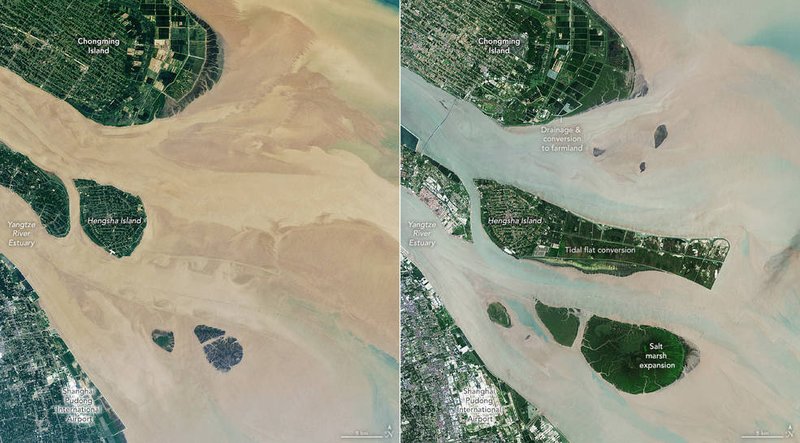In my years studying science funding patterns, I’ve encountered a fascinating paradox: some of the most important scientific breakthroughs in history began as projects that sounded peculiar, niche, or even frivolous to the untrained ear. As a data scientist specializing in research outcomes, I’ve become increasingly concerned about recent attacks on federal science funding—particularly through initiatives like Elon Musk’s DOGE team, which threatens to drastically reduce support for vital research institutions.
The cuts proposed to agencies like the National Science Foundation, National Institutes of Health, NOAA, and USGS aren’t just budget adjustments—they represent potential losses of knowledge that could help us solve our most pressing environmental and public health challenges. To understand what’s at stake, let’s examine the remarkable hidden value of federally funded science.
Funding – Golden Discoveries from Unexpected Places
The Golden Goose Awards, established to recognize federally funded research that initially seemed trivial but later yielded transformative outcomes, provides numerous examples of how seemingly obscure studies produced extraordinary results. Consider these recent winners:
- Research on red-cockaded woodpeckers that revealed novel approaches to protecting all bird species
- Studies of bright pink penguin droppings visible in satellite imagery that evolved into a 40-year project tracking wildlife populations from space
- Investigations of frog skin that led to treatments saving over 50 million human lives

What makes these projects remarkable isn’t just their outcomes but their unpredictability. When researchers first received funding to study penguin droppings or frog skin, no one could have anticipated their eventual impact. This unpredictability is precisely why federal funding is so critical—it allows scientists to follow evidence where it leads, even when the destination isn’t obvious at the outset.
Funding – The Yellowstone Bacteria That Changed Everything
One of the most profound examples of unexpected scientific payoff comes from Thomas Brock and Hudson Freeze’s 1969 National Science Foundation-funded expedition to Yellowstone National Park. Their mission? To study bacteria living in high-temperature geysers—hardly a project that would have seemed revolutionary at the time.
What they discovered was Thermus aquaticus, a heat-resistant bacterium that would later become foundational to modern genetics and biotechnology. The enzyme isolated from this organism made the polymerase chain reaction (PCR) possible, revolutionizing DNA analysis, enabling genetic testing for countless diseases, and facilitating the sequencing of the human genome.
“You can’t predict where the research is going to go next,” explains Dr. Freeze, now director of the genetic disease program at Sanford Burnham Medical Research Institute. This unpredictability is precisely why federal funding matters—it creates space for discovery unbound by immediate commercial demands.
The Economics of Scientific Uncertainty
Critics of federal research funding often demand predictable returns on investment, but this fundamentally misunderstands how scientific discovery works. Barry Toiv, vice president for public affairs at the Association of American Universities, notes that economists attribute approximately 50% of economic growth over recent decades to innovation—much of which stems from federally funded university research.
This research is valuable specifically because scientists cannot predict exactly where it will lead. Private industry, with its obligation to shareholders and quarterly profits, rarely funds truly fundamental research. As Thom Mason, director of Oak Ridge National Laboratory, points out: “There’s not a lot of room for fundamental science in an environment where people are driven by the next quarterly report.”
Consider the case of John Eng, another Golden Goose Award recipient, who studied Gila monster venom and discovered a compound that led to an important diabetes medication. No pharmaceutical company would have initially funded this research into reptile venom without knowing its potential applications.
From Basic Research to Life-Saving Applications
What’s particularly striking in my analysis of federally funded research outcomes is the time horizon involved. Many crucial discoveries take decades to move from basic research to practical application:
- The fundamental mathematics behind Google’s search algorithm began as NSF-funded research
- MRI technology emerged from basic physics research supported by federal grants
- GPS technology originated from Department of Defense fundamental research
When I examine the data on research timelines, I find that the average gap between basic discovery and commercial application is often 20-30 years. This timeframe makes such research nearly impossible to sustain through private funding alone.

Climate Science and Extinction Research at Risk
Perhaps most concerning about current threats to federal science funding are the potential losses in climate and conservation science. The research on tracking wildlife populations from satellite imagery has provided invaluable data on biodiversity loss and climate impacts—data we wouldn’t have without sustained federal support.
Similarly, studies of rare or endangered species that might seem esoteric have repeatedly yielded unexpected insights into ecosystem health, potential pharmaceutical compounds, and even climate adaptation strategies.
When we cut funding for these areas, we aren’t just losing specific studies—we’re potentially losing discoveries that could help us address our most pressing environmental challenges. And unlike commercial research, once federal research programs are dismantled, the expertise, data continuity, and institutional knowledge can take decades to rebuild.
The False Economy of Research Cuts
Opponents of federal research funding often frame their arguments in terms of eliminating “waste” or “fraud,” but this fundamentally misrepresents how scientific inquiry works. Scientific exploration requires the freedom to investigate questions without guaranteed outcomes—that’s precisely how major breakthroughs happen.
The irony is that cutting basic research funding often costs more than it saves. When we lose the ability to predict environmental changes, develop new medical treatments, or create more efficient technologies, the long-term economic impacts far outweigh the short-term budget savings.
A data-driven approach to science funding would recognize that while not every project yields dramatic results, the portfolio as a whole delivers extraordinary returns. The current approach to cutting science funding isn’t about efficiency—it’s ideologically driven and scientifically unsound.
Protecting the Future of Discovery
So what can be done to protect federal science funding? Based on my analysis of successful advocacy efforts, several approaches show promise:
- Better communication of scientific outcomes in accessible language
- Highlighting economic benefits of past federally funded research
- Connecting basic research to tangible improvements in people’s lives
- Building broader coalitions that include industry partners who benefit from federal research
Scientists also need to become more engaged in advocacy and public communication. The Golden Goose Awards represent an excellent step in this direction—they help translate seemingly obscure research into compelling stories of discovery and impact.
The Unknown Discoveries We Stand to Lose
Perhaps the most profound concern about current funding threats is what we might never know we’ve lost. How many potential breakthroughs in climate science, biodiversity protection, or public health might never materialize because a promising line of research loses support?
When I consider what might have happened if Thomas Brock and Hudson Freeze had never received funding to study Yellowstone’s hot springs, I’m struck by how profoundly different our technological landscape might be. PCR technology—the same technology that allowed rapid COVID testing—might have been delayed by decades.
Federal science funding isn’t just about supporting current knowledge; it’s about creating possibilities for future discoveries we can’t yet imagine. It’s about maintaining our capacity to address challenges we don’t yet recognize. And in that sense, cutting this funding doesn’t just harm science today—it constrains our collective future.
The next time you hear someone dismiss a federally funded research project as trivial or wasteful, remember the pink penguin droppings that revolutionized wildlife monitoring, the frog skin that saved millions of lives, and the hot spring bacteria that transformed modern medicine. In science, the most powerful discoveries often come from the most unexpected places—but only if we have the wisdom to keep looking.



